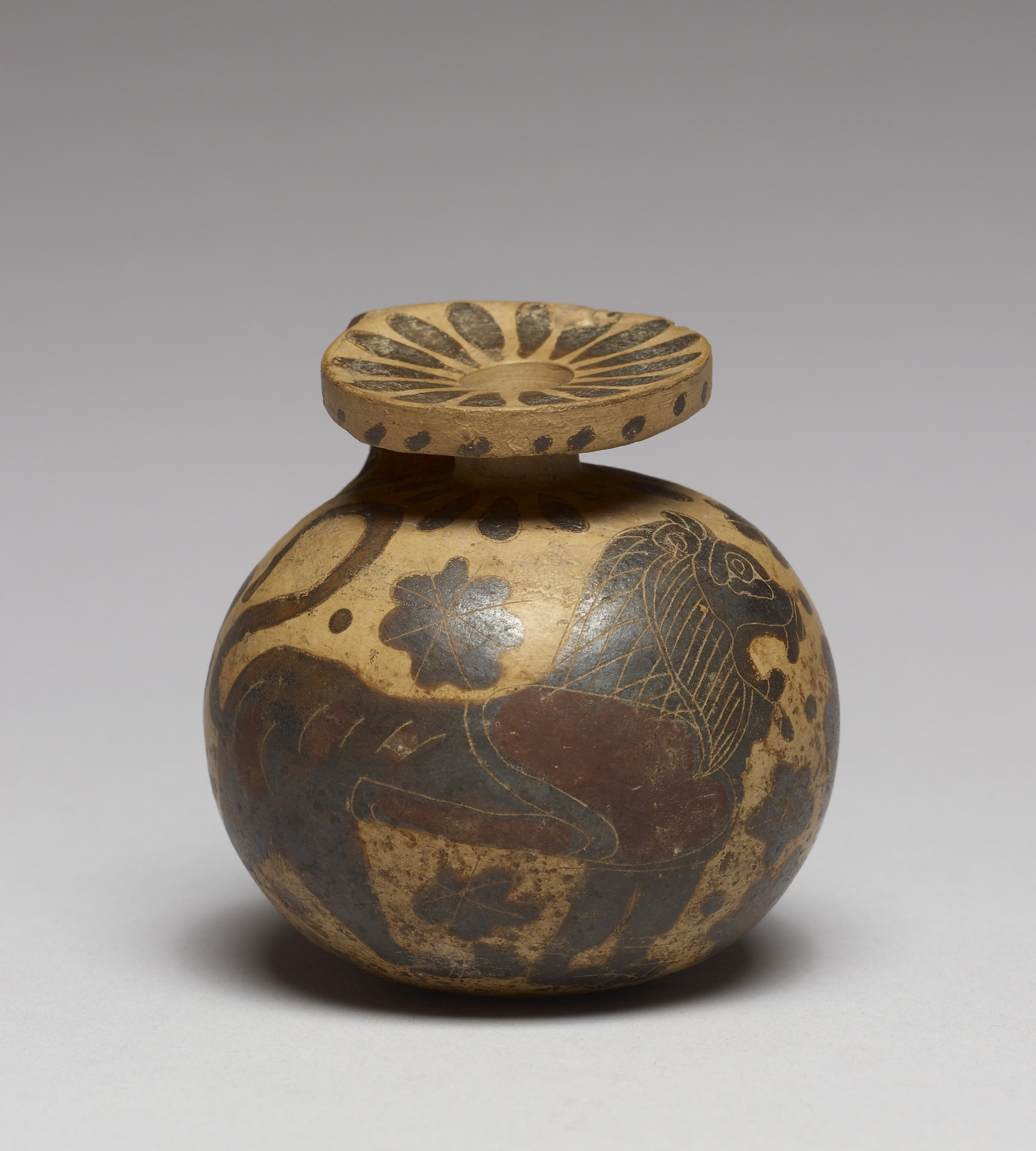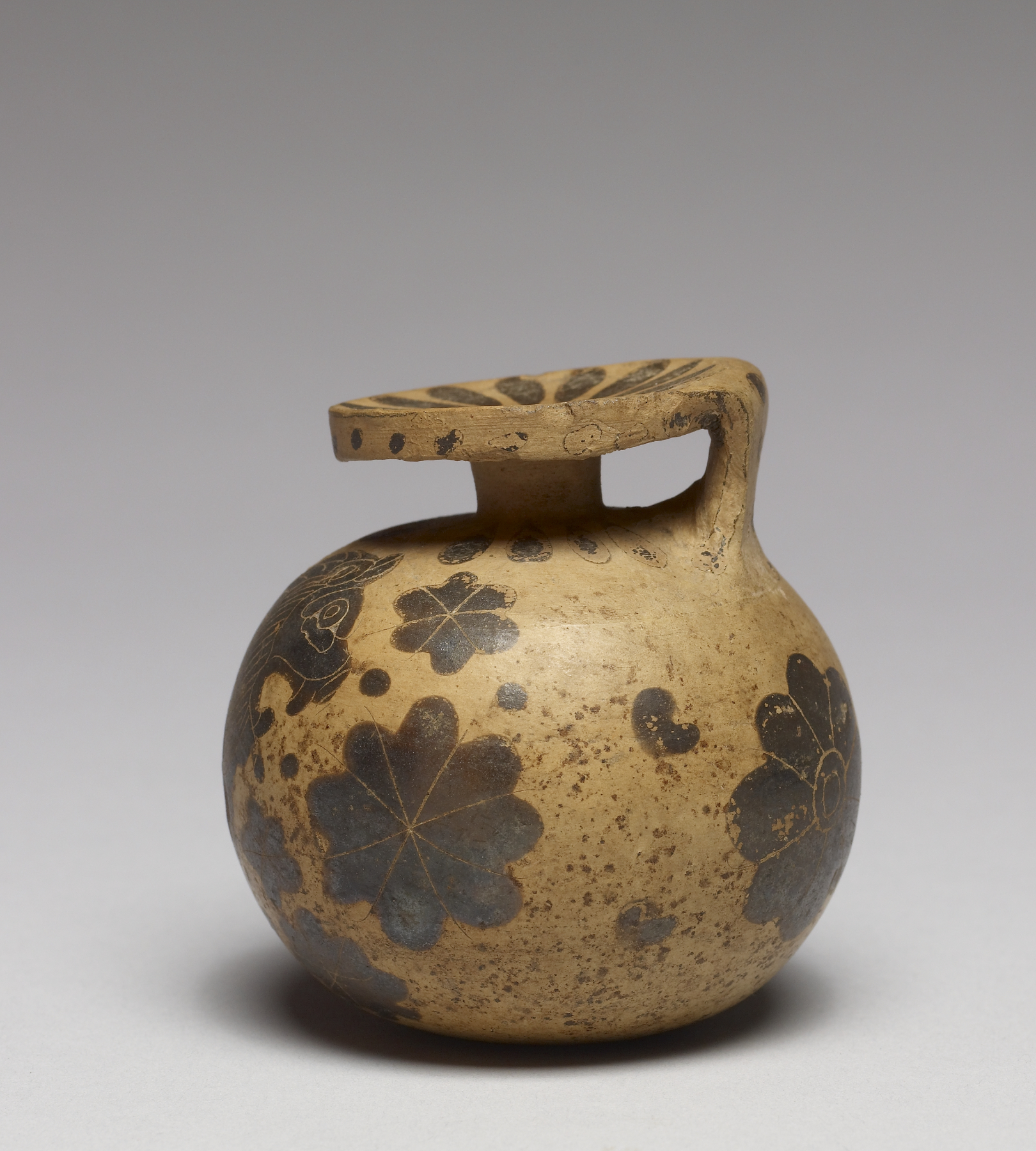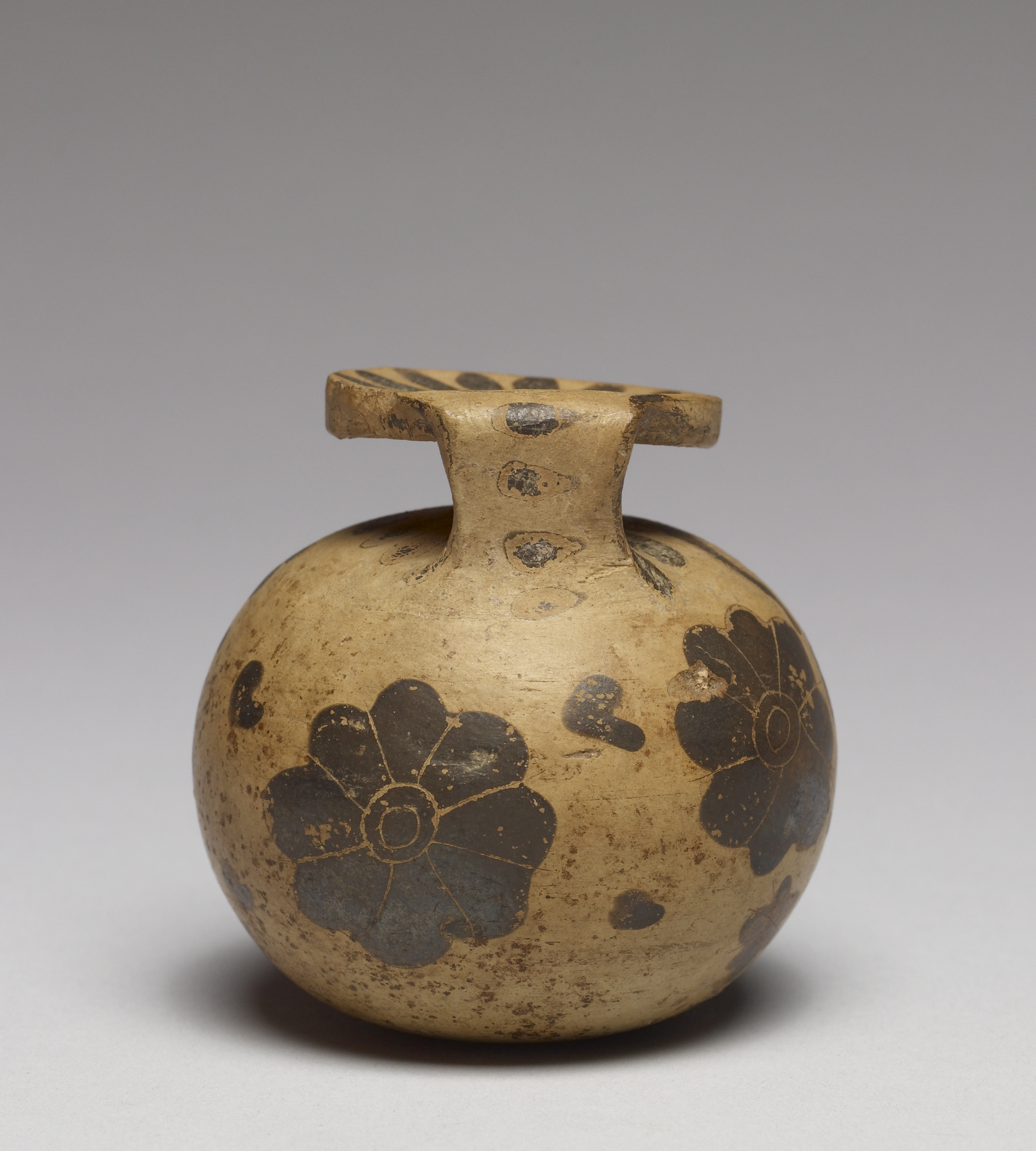Aryballos with a Lion
(Ancient Greece )
This aryballos depicts a black and red lion in profile with its mouth open, surrounded by rosettes of different sizes. The lion's facial features, mane, and body are enhanced by the extensive use of incision to articulate flesh, fur, and musculature.
The aryballos is in the style of pottery made in Corinth, which was a major ceramic production center during the Archaic period and created goods that were traded within Greece and around the Mediterranean. Corinthian artists and workshops innovated both technically and artistically by experimenting with black and red slips (mixtures of fine clay and water) to decorate their ceramics with their signature animal and figurative scenes. Corinthian-style pottery often employs motifs that were common in ancient West Asia, depicting real and mythological animals in registers crowded with decorative details, such as rosettes.
Provenance
Provenance (from the French provenir, 'to come from/forth') is the chronology of the ownership, custody, or location of a historical object. Learn more about provenance at the Walters.
E.S. David, Long Island City, New York [date and mode of acquisition unknown]; Walters Art Museum, 1957, by purchase.
Exhibitions
| 2009-2011 | Heroes: Mortals and Myths in Ancient Greece. The Walters Art Museum, Baltimore; Frist Center for the Visual Arts, Nashville; San Diego Museum Of Art, San Diego; Alexander S. Onassis Public Benefit Foundation (USA), New York. |
| 1978 | In Search of Ancient Treasure: 40 Years of Collecting. The Walters Art Gallery, Baltimore. |
Conservation
| Date | Description | Narrative |
|---|---|---|
| 10/25/2005 | Treatment | cleaned |
| 9/22/2009 | Treatment | coated |
Geographies
Greece, Corinth (Place of Origin)
Measurements
H: 2 11/16 x Diam: 2 5/8 in. (6.8 x 6.67 cm)
Credit Line
Museum purchase, 1957
Location in Museum
Not on view
Accession Number
In libraries, galleries, museums, and archives, an accession number is a unique identifier assigned to each object in the collection.
In libraries, galleries, museums, and archives, an accession number is a unique identifier assigned to each object in the collection.
48.2095






